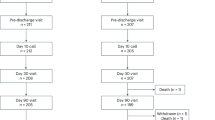Abstract
Transcatheter closure of atrial septal defects has been employed increasingly in the past decade. This technique is now regarded as the treatment of choice for patients with appropriate atrial septal defects. Transcatheter closure of ventricular septal defects (VSDs) has undergone fewer clinical trials, even though VSDs are more common than atrial septal defects. The implanted device does not seem to embolize and complications are few. Decreases in left ventricular and diastolic pressure and improvement of ventricular function have been reported early following device closure, and the left-to-right shunt has been either eliminated or dramatically reduced. In small infants who are in heart failure at a young age and who weigh less than 8 kg, which is below the recommended threshold for device closure, technological advancements in device size and catheter manipulation are needed before VSDs can be closed. A large number of VSDs, particularly if small to medium in size, will become smaller or close spontaneously, making intervention unnecessary. Muscular VSDs have been closed with transcatheter devices for the past 15 years. Although perimembranous defects are more common than muscular defects, they have not become more amenable to closure since the introduction of the Amplatzer® VSD occluder device (AGA Medical Corporation, Golden Valley, MN). Previous devices, such as the Rashkind and button devices, have been unsuccessful in attempts at closure of the VSDs because of the proximity of the defects to the aortic valve and potential aortic valve damage. Before the transition is made to routine therapy, large, multicenter trials are justified to test the feasibility, safety and efficacy of nonsurgical closure of VSDs. In this review, I discuss the current applications of transcatheter closure of membranous, perimembranous and muscular VSDs, in particular with Amplatzer® devices, and the implications for future development.
This is a preview of subscription content, access via your institution
Access options
Subscribe to this journal
Receive 12 print issues and online access
$209.00 per year
only $17.42 per issue
Buy this article
- Purchase on Springer Link
- Instant access to full article PDF
Prices may be subject to local taxes which are calculated during checkout



Similar content being viewed by others
References
Graham TP and Gutgesell HP (1995) Ventricular septal defects. In Heart Disease in Infants, Children, and Adolescents, edn 5 (vol 1), 725–746 (Eds Moss AJ et al.) Philadephia: Lippincott, Williams & Wilkins
Hoffman JLE and Rudolph AM (1965) The natural history of ventricular septal defects in infancy. Am J Cardiol 16: 634–653
Soto B et al. (1980) Classification of ventricular septal defects. Br Heart J 43: 332–343
de Leval M (1983) Ventricular septal defects. In Surgery for Congenital Heart Defects, 283 (Eds Stark J and de Leval M) London: Gruen & Stratton
Wilkinson JL (2000) Ventricular septal defect, results of operation. In Pediatric Cardiovascular Medicine, 307 (Eds Moller J and Hoffman J) New York: Churchill Livingstone
Hijazi ZM et al. (2002) Catheter closure of perimembranous ventricular septal defects using the new Amplatzer membranous VSD occluder: initial clinical experience. Catheter Cardiovasc Interv 56: 508–515
Fu Y-C et al. (2005) Transcatheter closure of ventricular septal defects. Pediatr Cardiol Today 3: 4–5
Holzer R et al. (2004) Transcatheter closure of perimembranous ventricular septal defects using the Amplatzer membranous VDS occluder: immediate and mid-term results. Circulation 110 (Suppl): SIII–S565
Pawelec-Wojtalik M et al. (2004) Transcatheter closure of perimembranous ventricular septal defect using an Amplatzer occluder—early results. Kardiol Pol 7: 31–40
Pedra CA et al. (2004) Percutaneous closure of perimembranous ventricular septal defects with the Amplatzer device: technical and morphological considerations. Catheter Cardiovasc Interv 61: 403–410
Thanopoulos BD et al. (2003) Catheter closure of congenital/acquired muscular VSDs and perimembranous VSDs using the Amplatzer devices. J Interv Cardiol 16: 399–407
Trehan V et al. (2003) Transcatheter closure of perimembranous ventricular septal defect in a patient with situs inversus and dextrocardia. Indian Heart J 55: 256–258
Pedra CA et al. (2005) Percutaneous closure of a residual perimembranous ventricular septal defect after surgical repair. Congenit Cardiol Today 3: 8–11
Holzer R et al.; Amplatzer Muscular Ventricular Septal Defect Investigators (2004) Device closure of muscular ventricular septal defects using the Amplatzer muscular ventricular septal defect occluder: immediate and mid-term results of a U.S. registry. J Am Coll Cardiol 43: 1257–1263
Arora R et al. (2004) Transcatheter closure of congenital muscular ventricular septal defect. J Interv Cardiol 17: 109–115
Holzer R et al. (2004) Transcatheter closure of postinfarction ventricular septal defects using the new Amplatzer muscular VSD occluder: Results of a U.S. Registry. Catheter Cardiovasc Interv 61: 196–201
Chessa M et al. (2005) Non-surgical closure of congenital ventricular septal defect: results and complications [abstract #316]. J Am Coll Cardiol 45
Author information
Authors and Affiliations
Corresponding author
Ethics declarations
Competing interests
The author declares no competing financial interests.
Rights and permissions
About this article
Cite this article
Moodie, D. Technology Insight: transcatheter closure of ventricular septal defects. Nat Rev Cardiol 2, 592–596 (2005). https://doi.org/10.1038/ncpcardio0351
Received:
Accepted:
Issue Date:
DOI: https://doi.org/10.1038/ncpcardio0351



